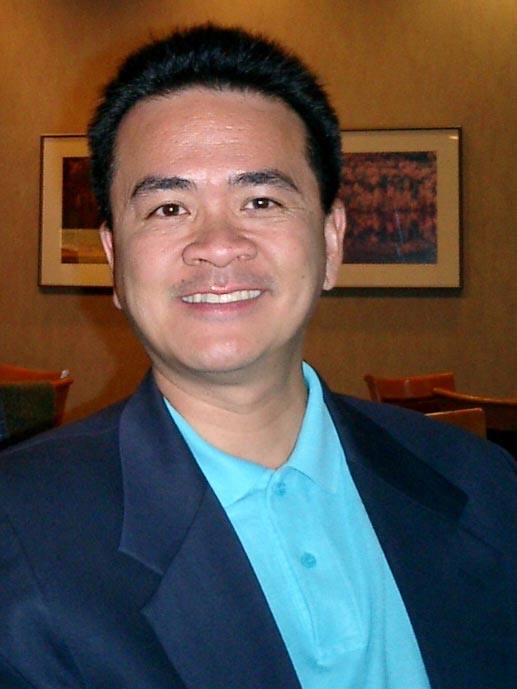Pinoy project manager at NASA at the front of space exploration
In 1969, it was said that “America conquered the moon, but the Philippines conquered the Universe.”
That was the same year Apollo 11 with three American astronauts from NASA —Neil Armstrong, Edwin “Buzz” Aldrin, and Michael Collin— successfully landed on the moon. The moon landing coincided with the Philippines’ first Miss Universe crown won by Gloria Diaz.
But more than 40 years later, Filipinos are moving to conquer the universe for real —through space exploration and research at the National Aeronautics and Space Administration (NASA).
Pinoy pioneers
In fact, one of the engineers who worked on the Mars rover Curiosity is Filipino-American Gregory Villar III, who went to high school at St. Louis University in Baguio City.
There's also Lloyd Manglapus, a former student of the University of Santo Tomas. He is Curiosity's flight software technical lead.
And now, here's yet another Filipino leading the way in space research: Dr. Ralph Basilio, the lead person behind NASA’s research on carbon dioxide in space.

Dr. Ralph Basilio (Photo: NASA)
Carbon dioxide in space
Carbon dioxide (CO2) is one of building blocks of life on Earth.
On the NASA website, the Orbiting Carbon Observatory-2 Project (OCO-2) is the “first Earth-dedicated remote sensing satellite to study atmospheric carbon dioxide from space.”
Talking about the importance of the project, Basilio said in an email interview, “Over the last 60 years or so, scientists have determined that only about one-half of the carbon emitted into the atmosphere stays in the atmosphere. Where is the other one-half going? Is it being absorbed, for example, by the southern oceans?”
Other than OCO-2 Project, Basilio also handles OCO-3 mission of Opportunity. OCO-3, on the other hand, intends to investigate about the “distribution of carbon dioxide on Earth in relation to its growing population and changing patterns of fuel combustion.” It is set to be launched on 2014.
Typical day(s) at NASA
Because Basilio’s responsibility extends from technical to administrative aspects, he believes there is not really a “typical” day at the Jet Propulsion Laboratory, where he holds office.
“Some days I spend attending to technical challenges, some days I work on evaluating budget and schedule performance, and some days I do advanced planning,” said Basilio.
Previous works
Basilio worked for other NASA projects, such as the Mars Pathfinder where they landed a small remote-controlled robot on The Red Planet, Deep Space 1 where they were able to demonstrate advanced technologies in space, and on CloudSat, where they operated a radar system to analyze the structure of clouds for climate and weather forecasting.
“Each of these projects allowed me the opportunity to work in relatively small teams and to take on increasing roles on responsibilities that helped me to eventually become a project manager,” said Basilio.
Basilio was also able to get his hands on the Space Shuttle Program while working for Rockwell International, a major American manufacturer of aircrafts and space vehicle components.
On that, Basilio said, “I enjoyed working on the manned space program and meeting the astronauts.”
Truly Filipino
Basilio migrated to the United States with his parents and brother when he was three years old. Basilio’s dad was an accountant and his mother, an optometrist. His parents are now retired, and are still happily staying in the US.
“I think the greatest Fil-Am trait that has allowed me to succeed is hard-work and perseverance. I may not be the most brilliant engineer/scientist, but no one has a better work ethic,” shared Basilio.
His father hails from Tacloban City, Leyte, and his mother from Lamitan, Basilan.
“I credit my parents and our culture…. They brought with them from the Philippines the Filipino culture and our Catholic faith,” added Basilio.
Basilio took up Aerospace Engineering at the California State Polytechnic University. After that, he took up his Master’s and PhD from the University of Southern California.
Basilio said his work ethic helped him obtain his PhD on a part-time basis over seven years. He was also proud to say that his Filipino traits helped him to be able to attain a deputy position at NASA, and now project-manage while in his 40s.
Since migrating to the United States, he had only been back to the Philippines thrice.
“I definitely wanted to return,” Basilio said. — TJD, GMA News
No comments:
Post a Comment